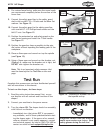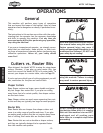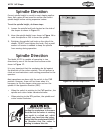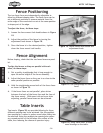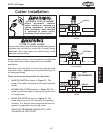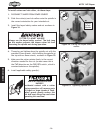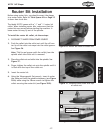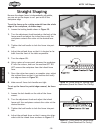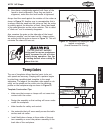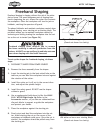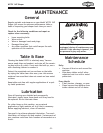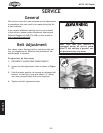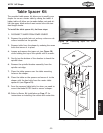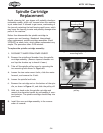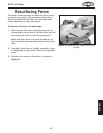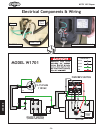
-19-
W1701 1HP Shaper
OPERATIONS
5. Now place a straightedge against both faces of the
fence to check alignment. Once they are both in
alignment, make sure the lock handle is tightened.
Always feed the wood against the rotation of the cutter as
shown in Figure 32. Another way to conceptualize this is
to always feed the wood into the cutter so that the cutter
is pushing against the direction of feed. Never feed wood
in the same direction as the cutter rotation. This is called
a “climb cut” and is extremely dangerous.
Also, examine the grain on the side edge of the board.
Whenever possible, run the board so the shaper cutters
are cutting with the grain as shown in Figure 31. This will
minimize the chance of tear out.
Figure 32. Sequence for shaping an edge
around a workpiece
(Guard Removed For Clarity).
Figure 33. Profile of a template being
used.
CUTTER CONTACT HAZARD!
Cutting small or narrow workpieces
greatly increases the risk of cutter
contact during operation.
Use jigs
or holding devices when cutting to
reduce this risk.
The use of templates allows identical parts to be cut
with speed and accuracy. Shaping with a pattern begins
by attaching a prefabricated template to the rough
workpiece. The edge of the template rides against a rub
collar on the spindle as the cutter cuts the matching
profile on the workpiece edge as shown in Figure 33.
Template Construction Tips:
• Make sure that screws or clamps will not come into
contact with the cutter.
• Design the assembly so that cutting will occur under-
neath the workpiece.
• Make handles for safety and control.
• Use materials that will move easily across the table
surface and rub collar.
• Install hold-down clamps at three sides of the pat-
tern assembly or screw the pattern assembly to the
back side of the workpiece.
Templates



